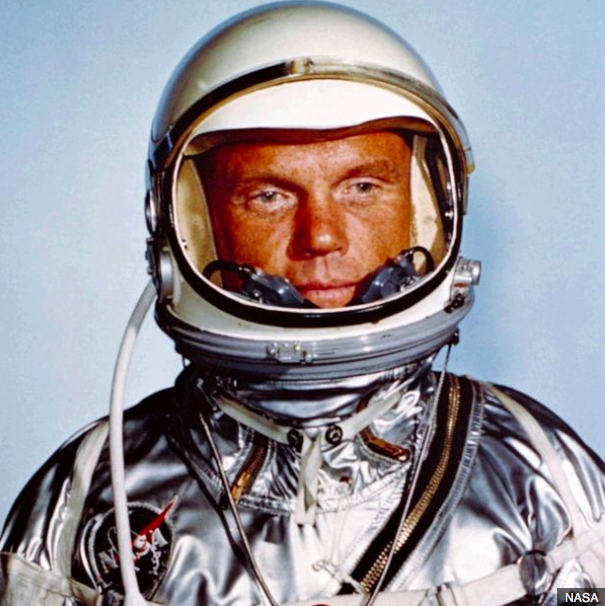John Glenn, the first American astronaut to orbit Earth,
dies aged 95. He orbited (circled) the Earth in 1962 aboard the Friendship 7
space capsule.
Glenn was the second man to orbit Earth, after
Soviet cosmonaut Yuri Gagarin on 12 April 1961 during a 108-minute orbit in the
Vostok 1 spacecraft. The American astronaut Alan Shepard became the first American in space
less than a month later on 5 May in the Mercury spacecraft and Gus Grissom followed him on 21 July 1961. Soviet cosmonaut Gherman Titov orbited Earth on 6 August 1961 - and the first person to film Earth from space.
But John Glenn (1921-2016) became the first American to orbit Earth on 20 February 1962 (and the fifth person in space) when he left Cape Canaveral. He spent four hours 55 minutes and 23 seconds in space, completing three orbits of Earth in the Friendship 7 space capsule.
But John Glenn (1921-2016) became the first American to orbit Earth on 20 February 1962 (and the fifth person in space) when he left Cape Canaveral. He spent four hours 55 minutes and 23 seconds in space, completing three orbits of Earth in the Friendship 7 space capsule.
He served in World War II and the Korean War as a combat pilot before
joining the space agency NASA – the National Aeronatics and Space
Administration – as an astronaut. After NASA he became a Democrat senator in
1974, where he served for 24 years.
In 1988 – 36 years after his first orbit of Earth – he returned to NASA and
became the oldest person to travel to space, at the age of 77.
(The oldest woman to travel to space is American Peggy Whitson, 56, for her third journey to the International Space Station in November 2016.)
Perth, the capital of Western Australia, in Australia, was called the City
of Light when John Glenn orbited Earth in 1962 because everyone turned on their
house, car, and street lights as his spacecraft passed above the city. The
residents did the same when Glenn passed by in 1998.
American president Barack Obama awarded John Glenn the Congressional Gold
Medal in 2011. In 2012 Obama presented Glenn with the Presidential Medal of
Freedom.
He married Annie Castor in 1942 and they have two children – a married that
lasted 73 years, until his death. Glenn will be buried at Arlington National
Cemetery in Virginia.
MARTINA NICOLLS is an international
aid and development consultant, and the author of:- The Shortness of
Life: A Mongolian Lament (2015), Liberia’s Deadest Ends (2012), Bardot’s Comet
(2011), Kashmir on a Knife-Edge (2010) and The Sudan Curse (2009).



Comments
Post a Comment